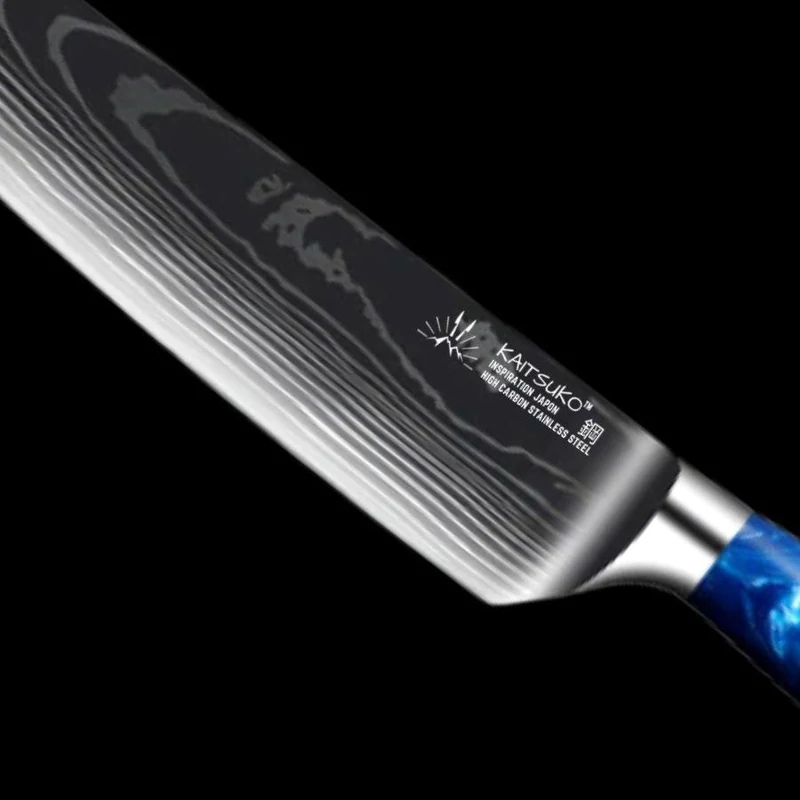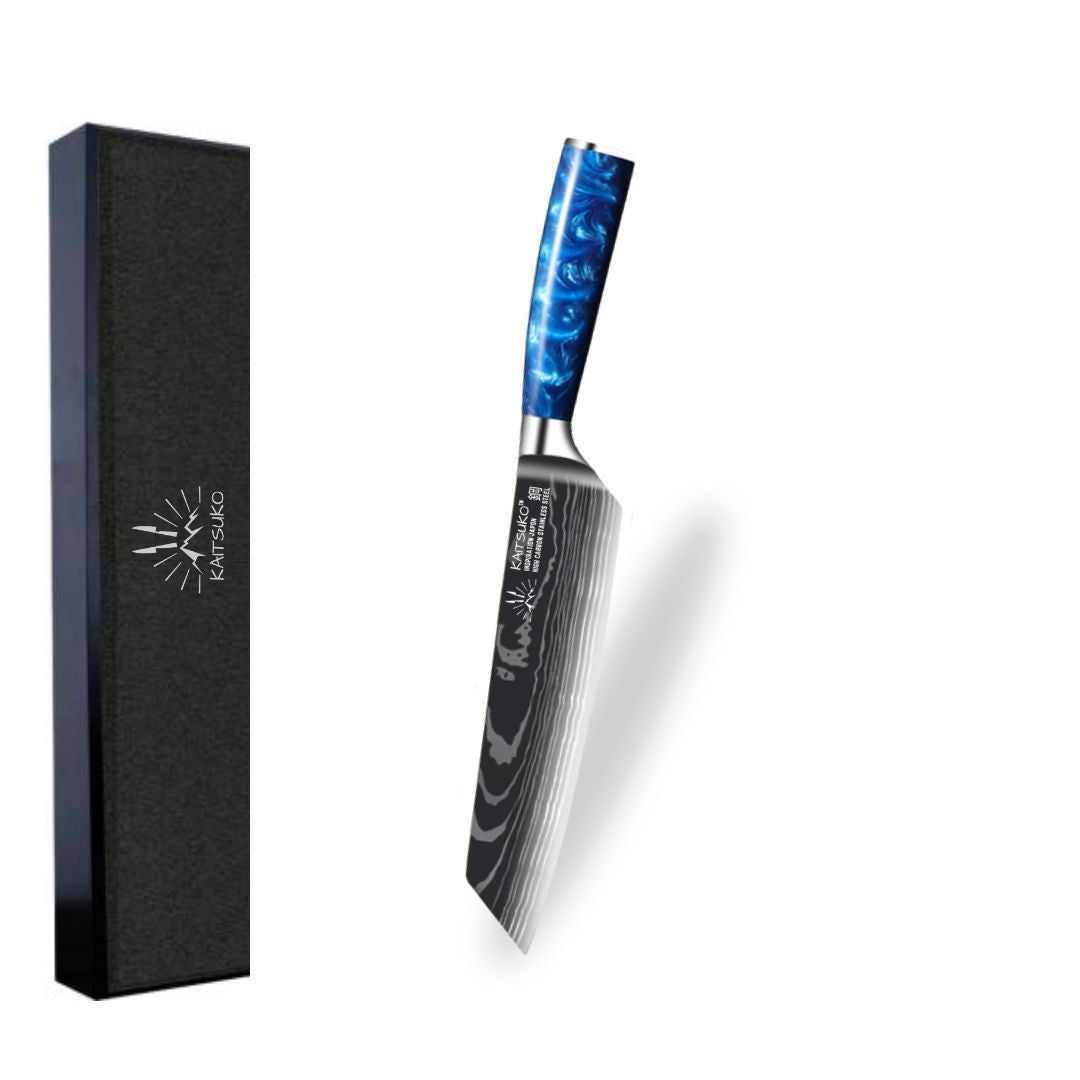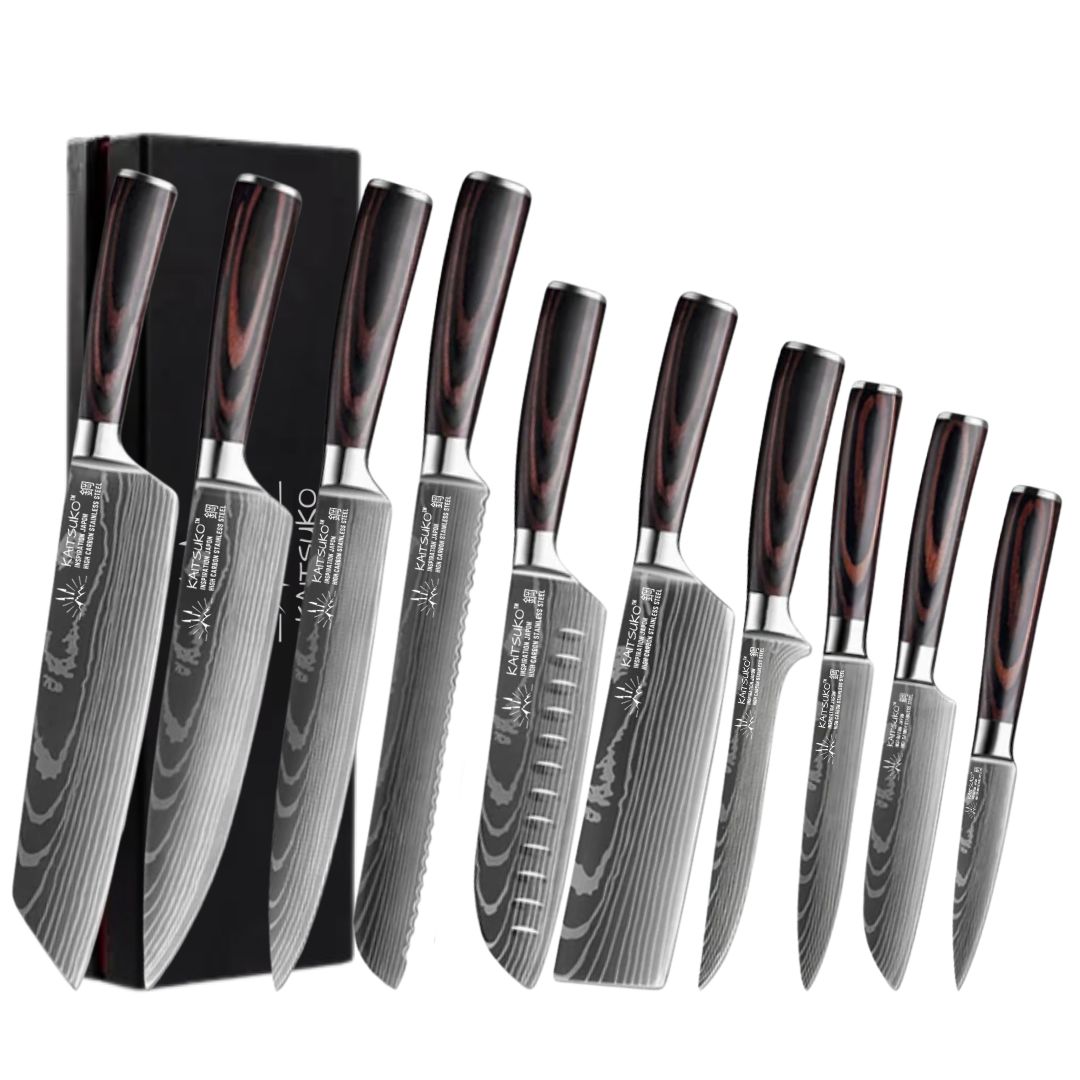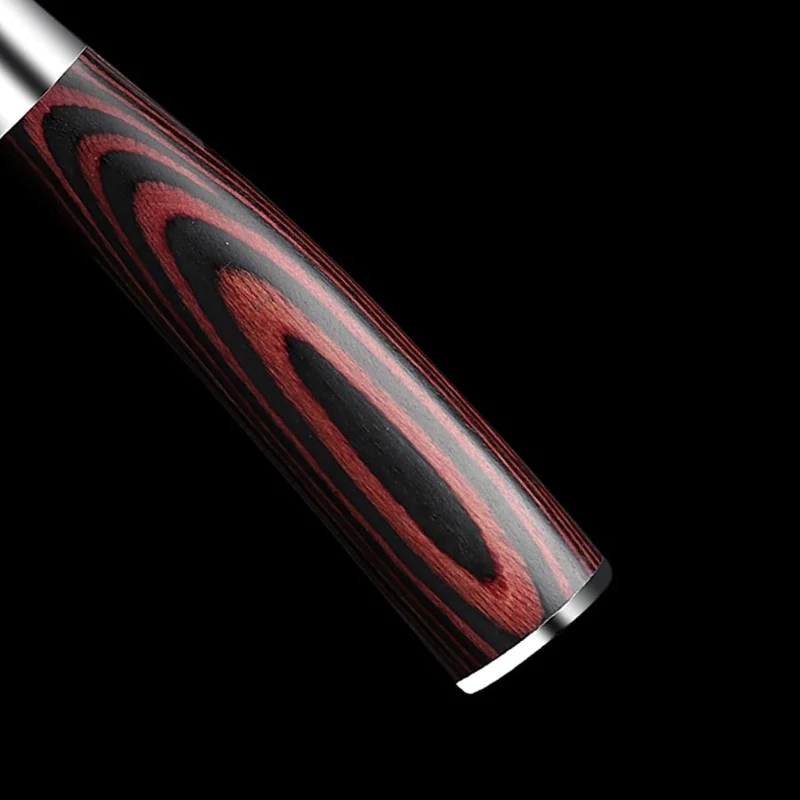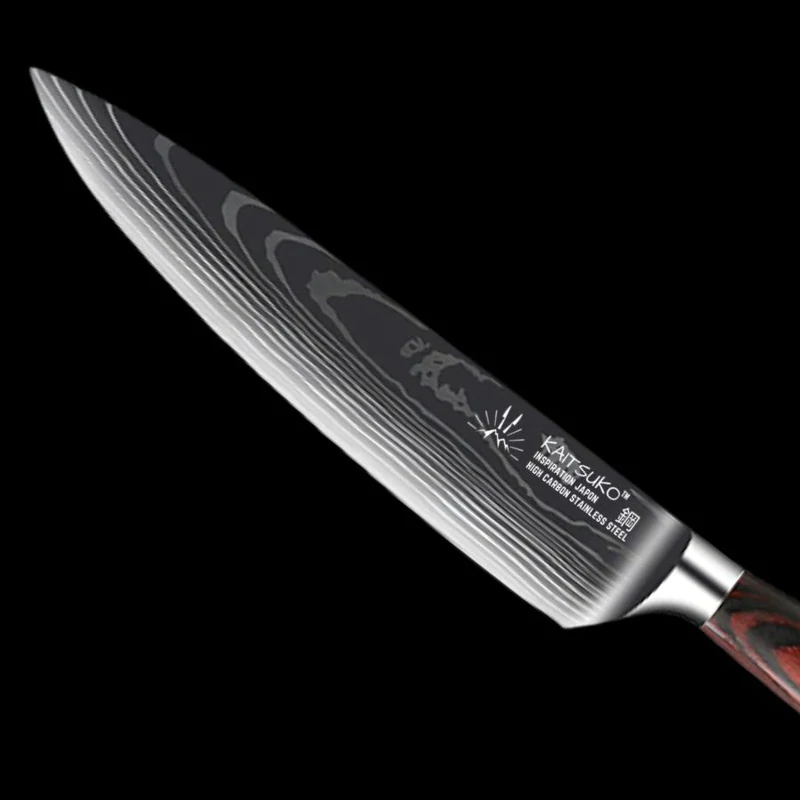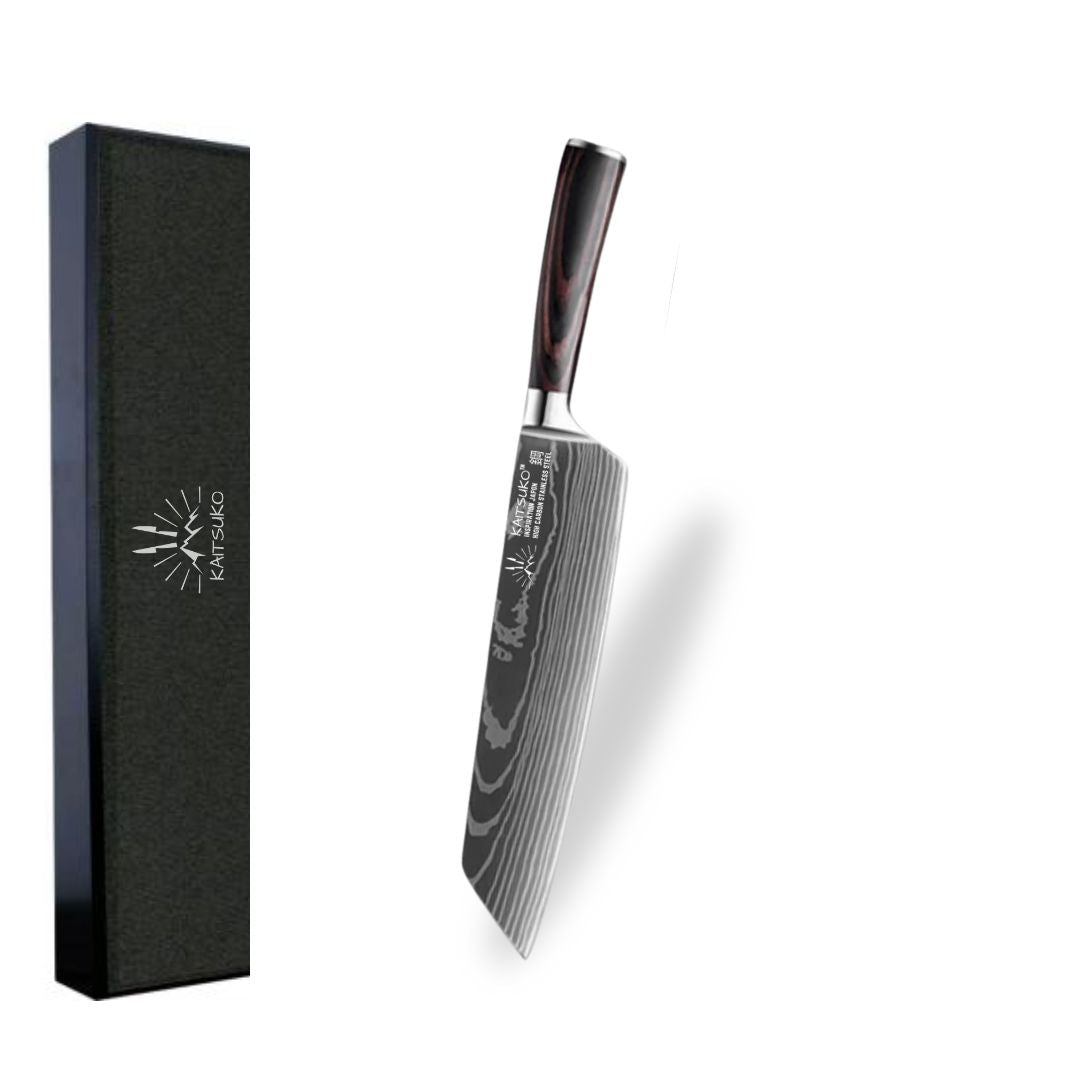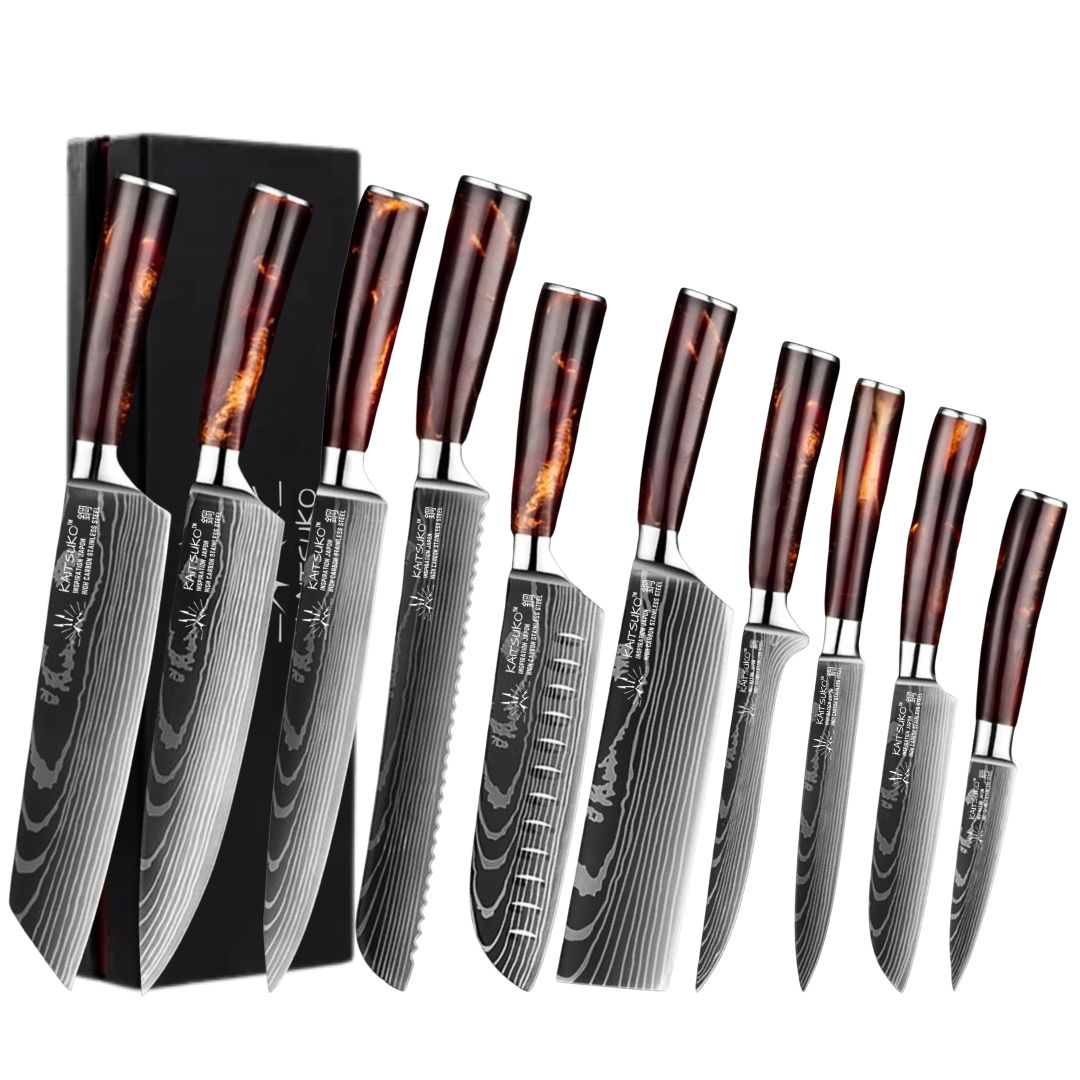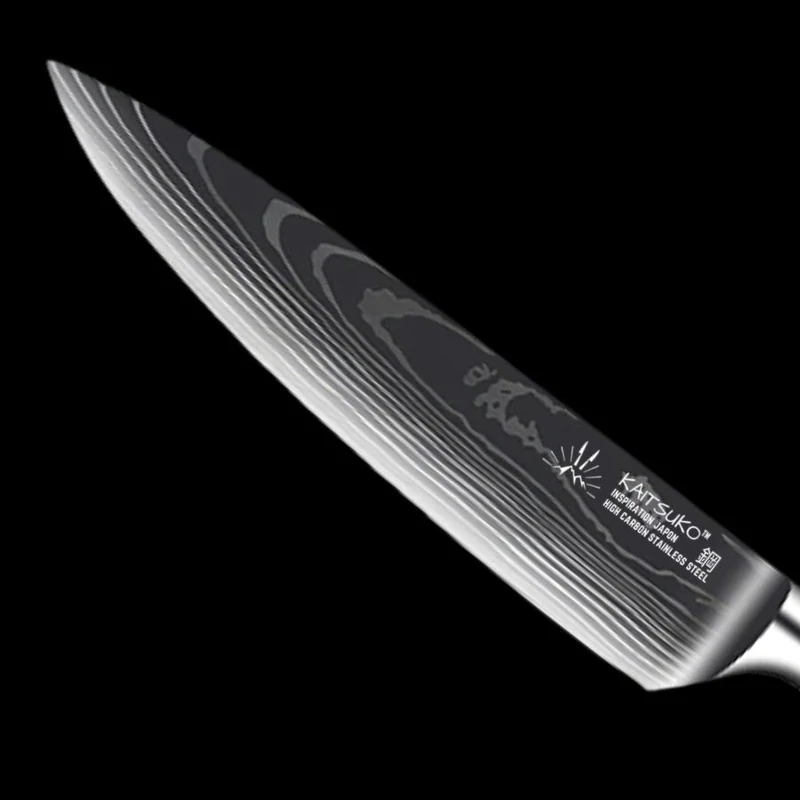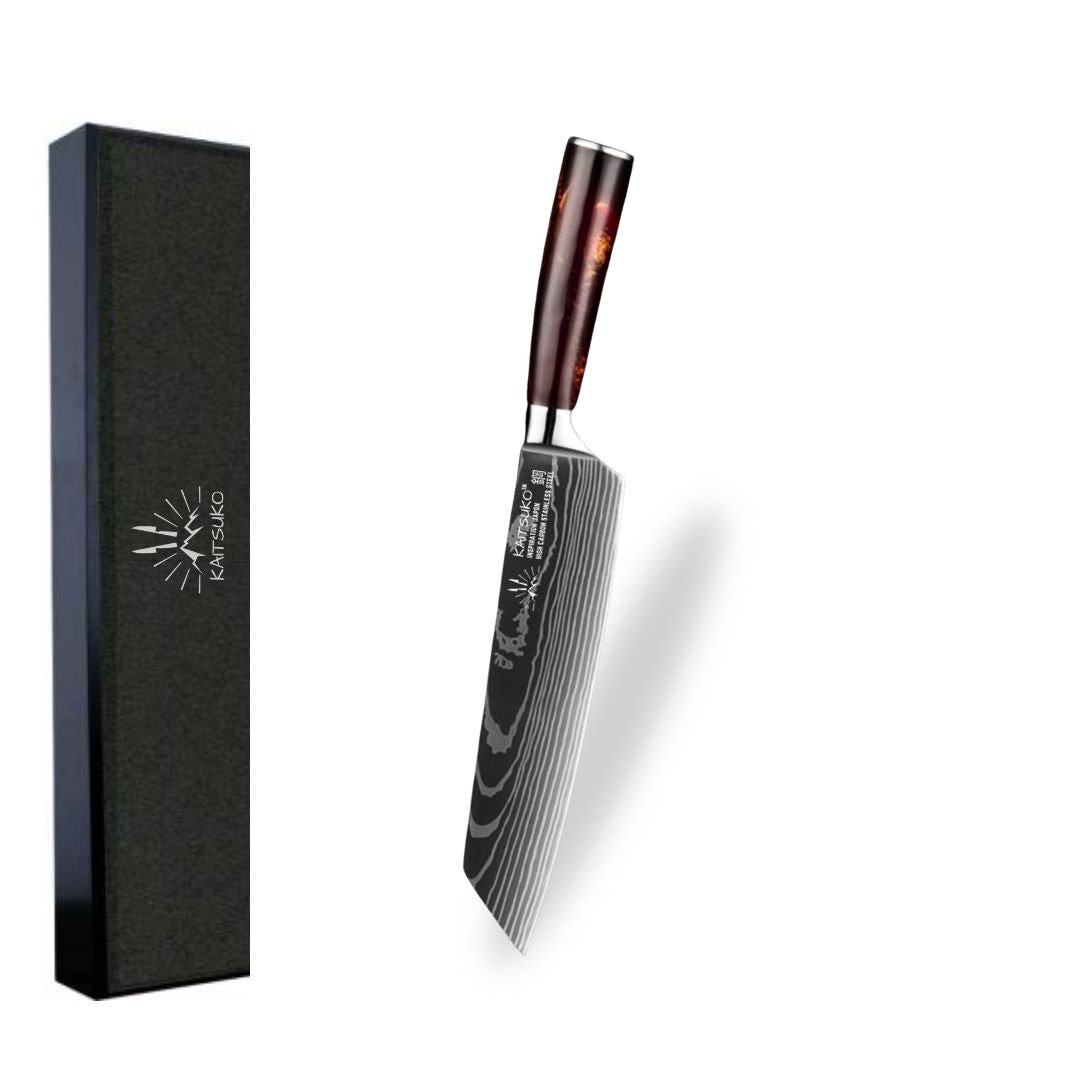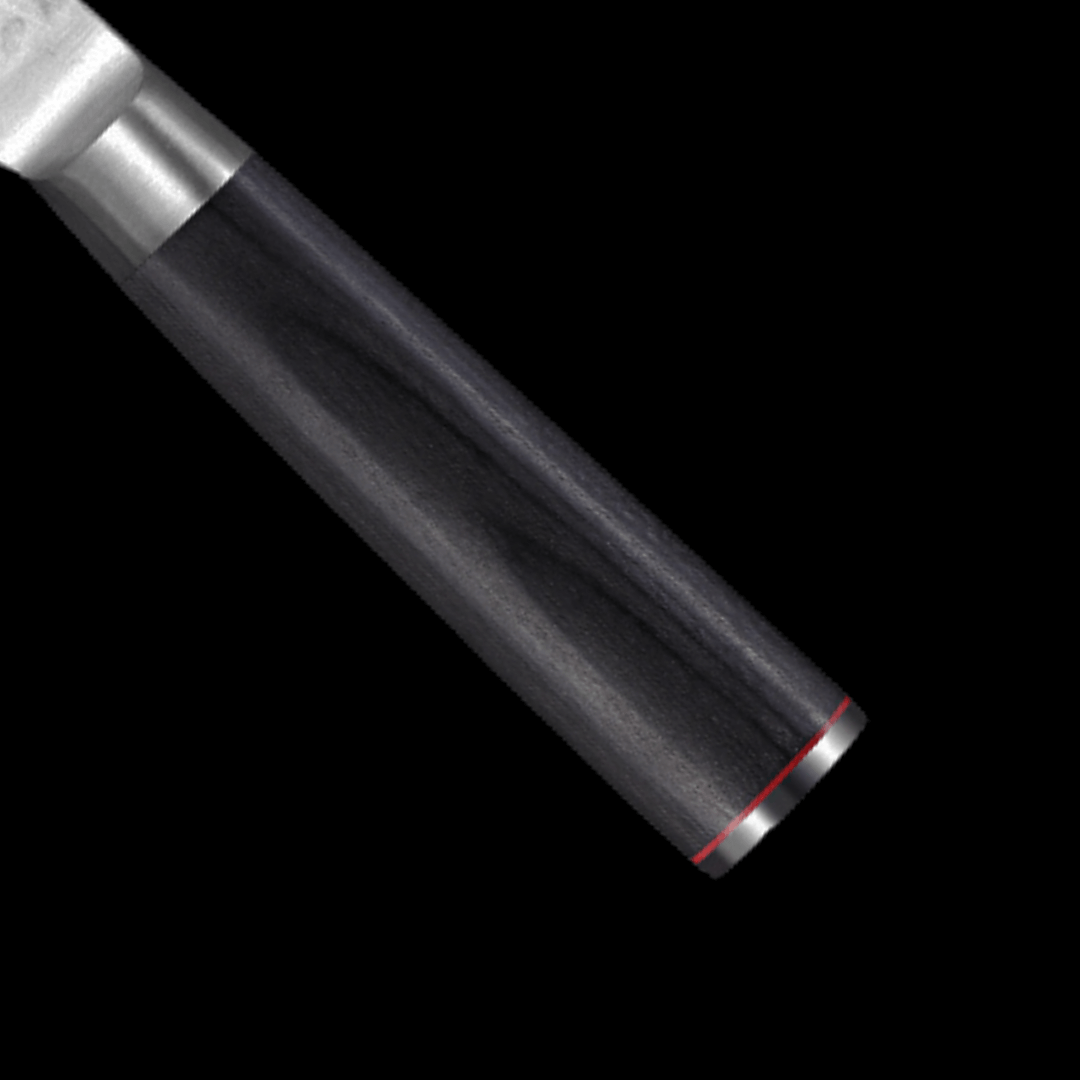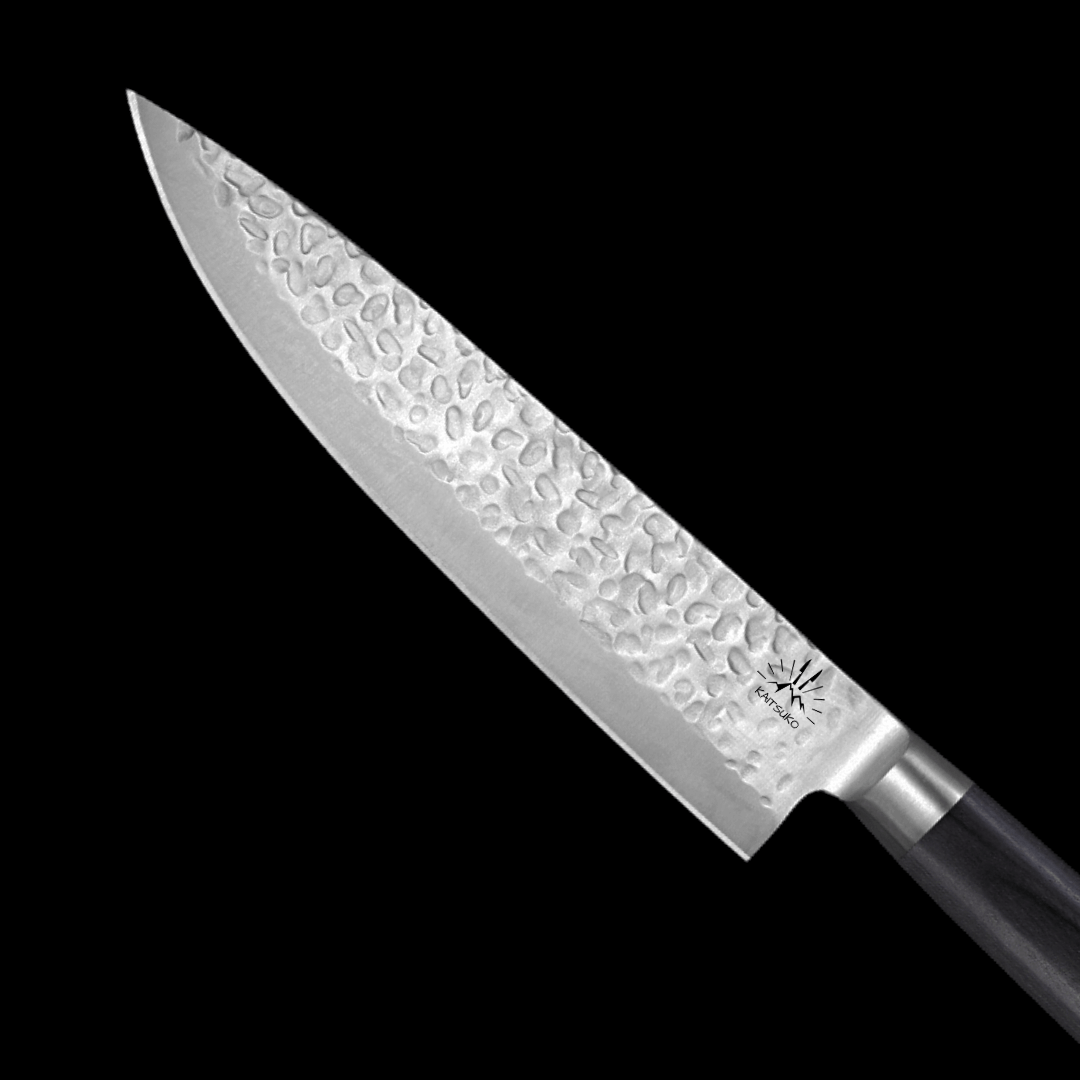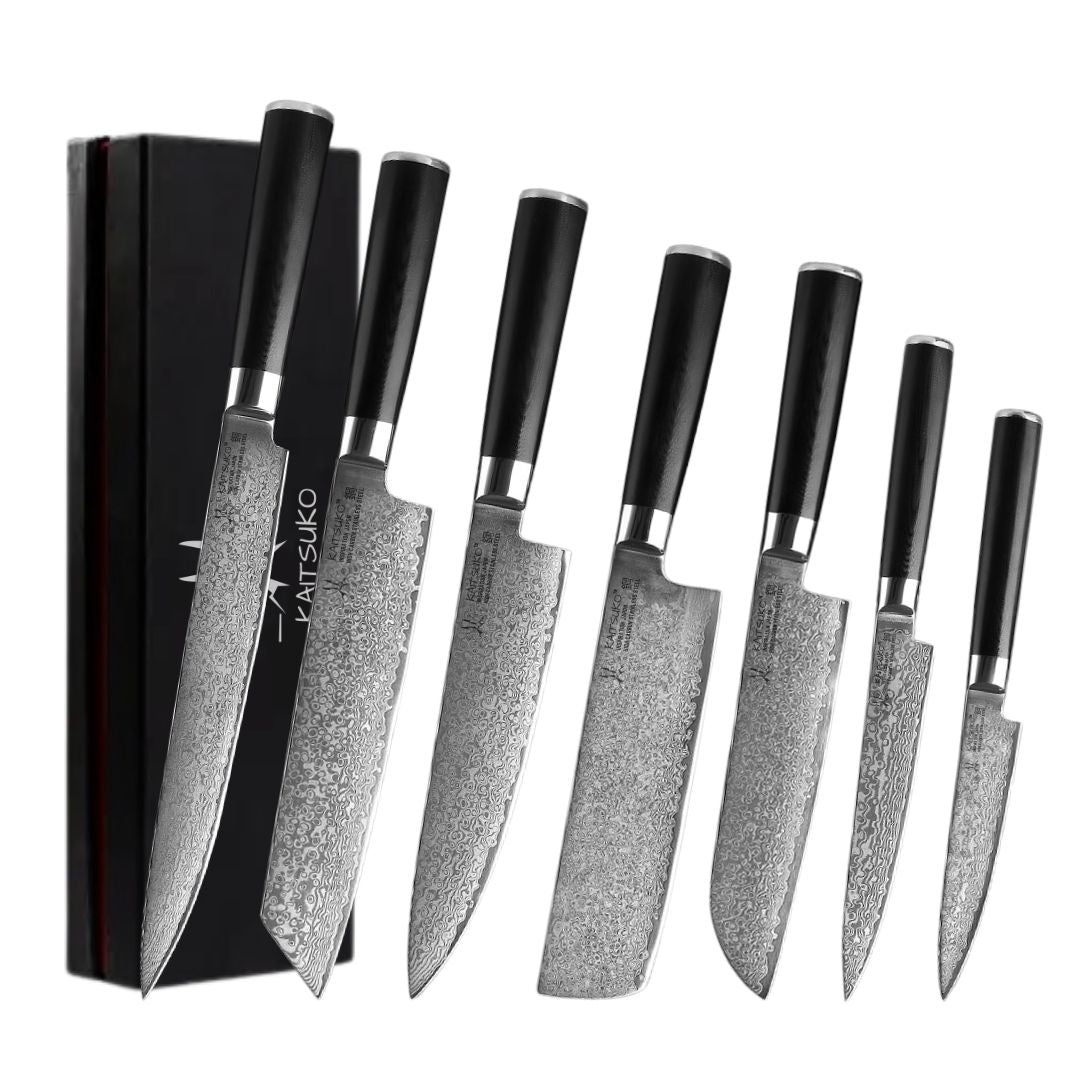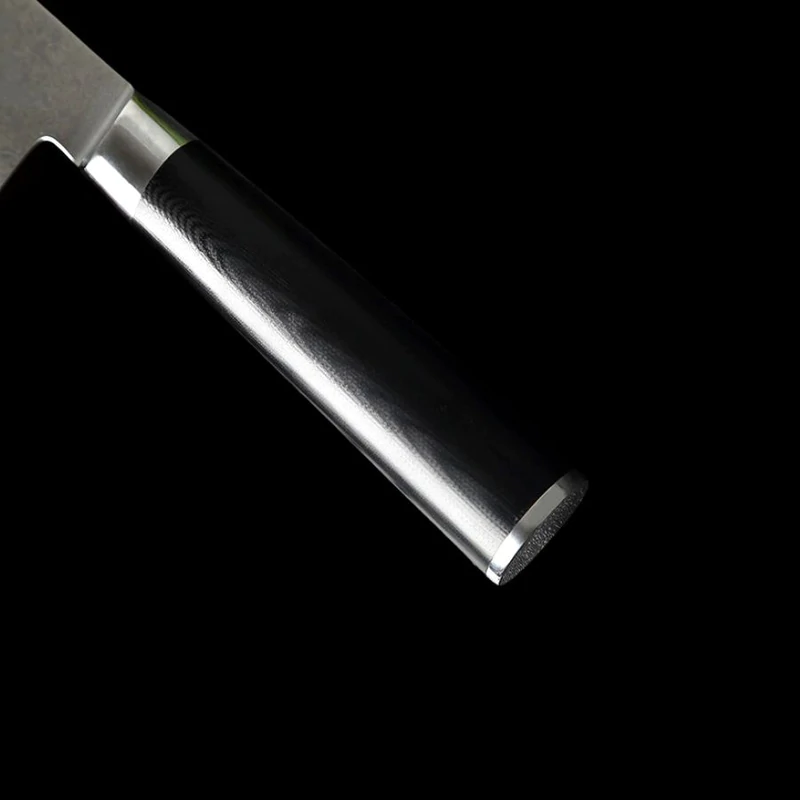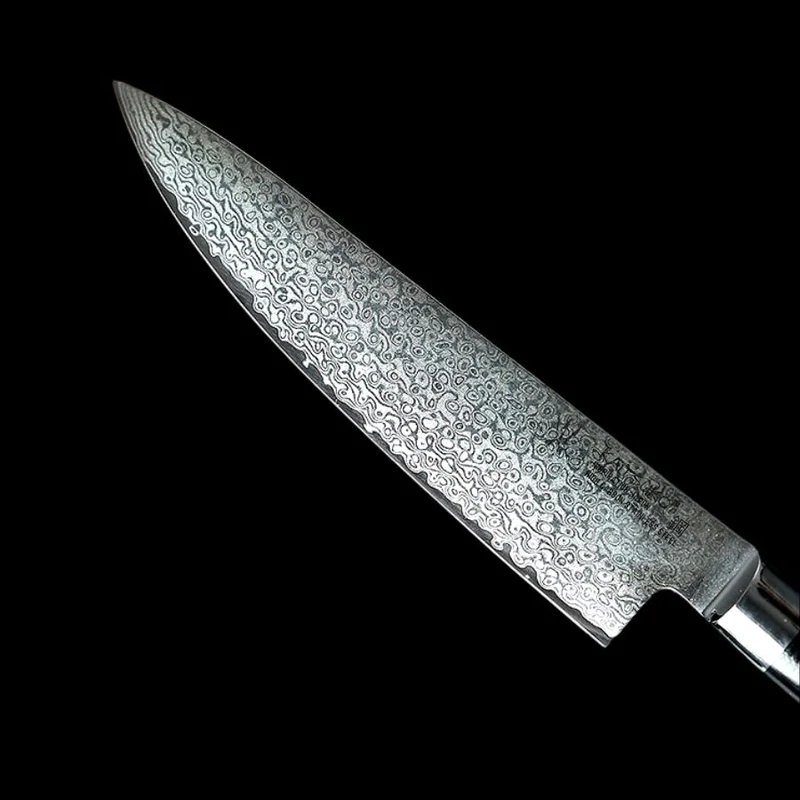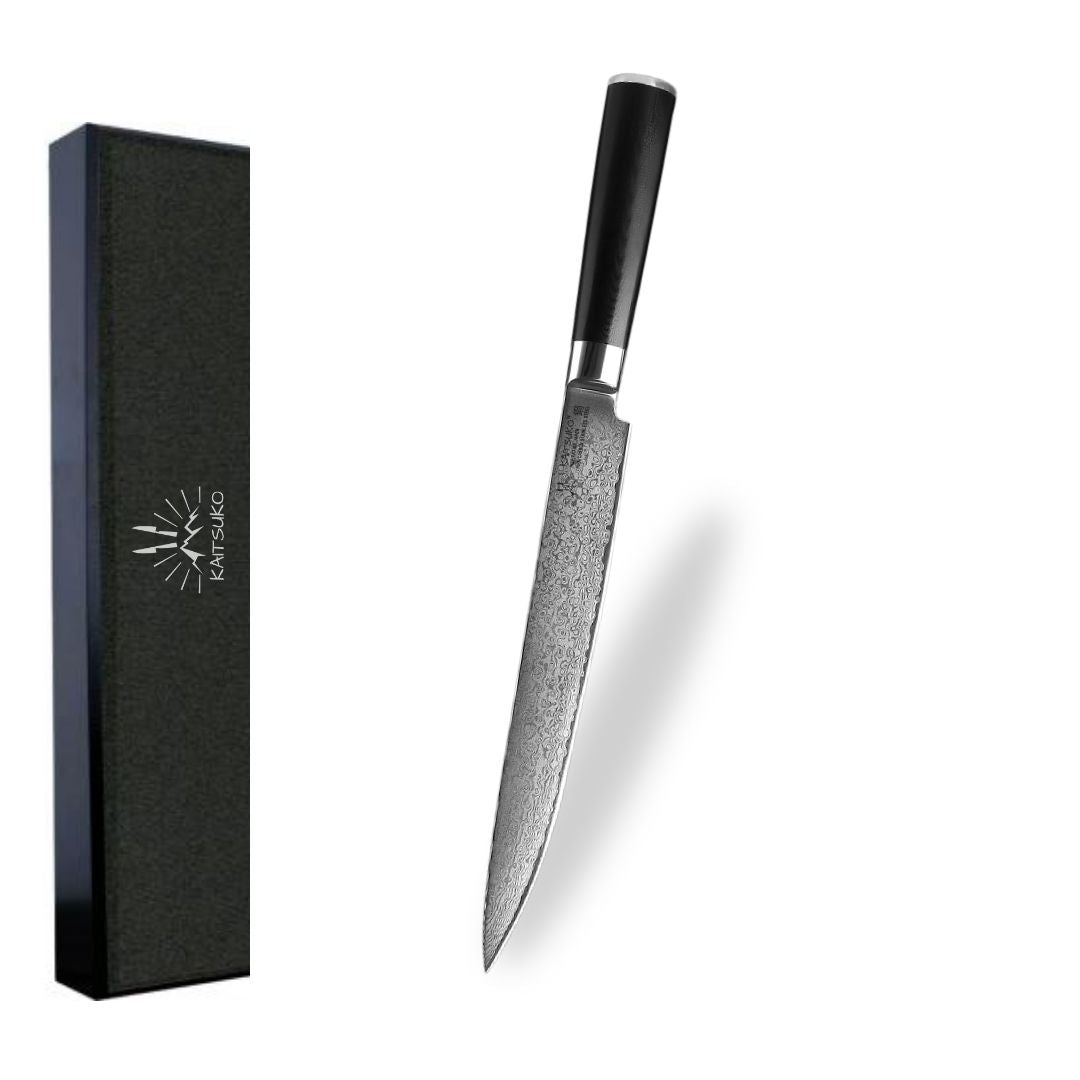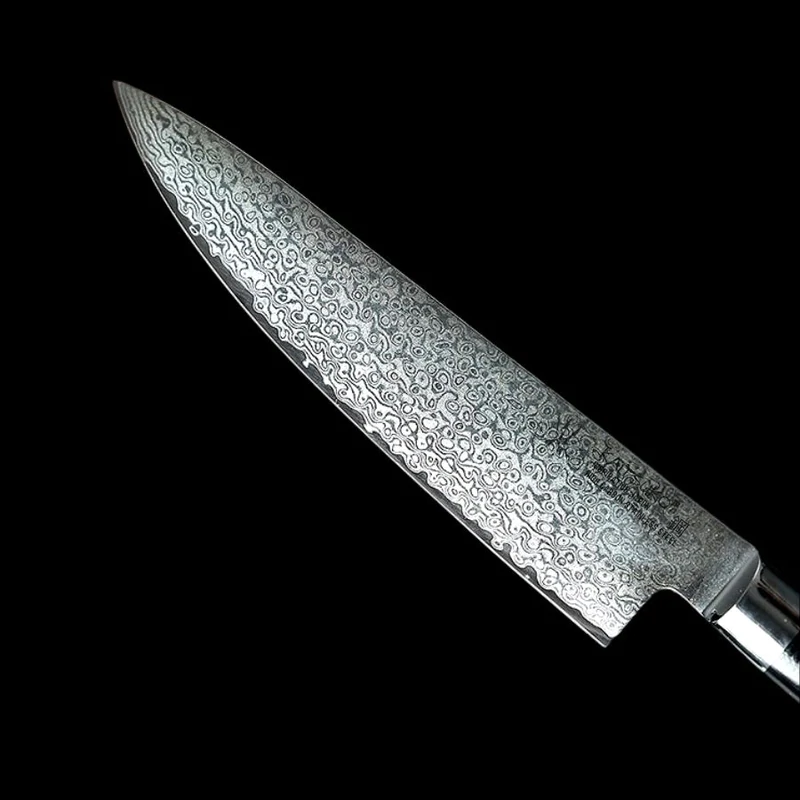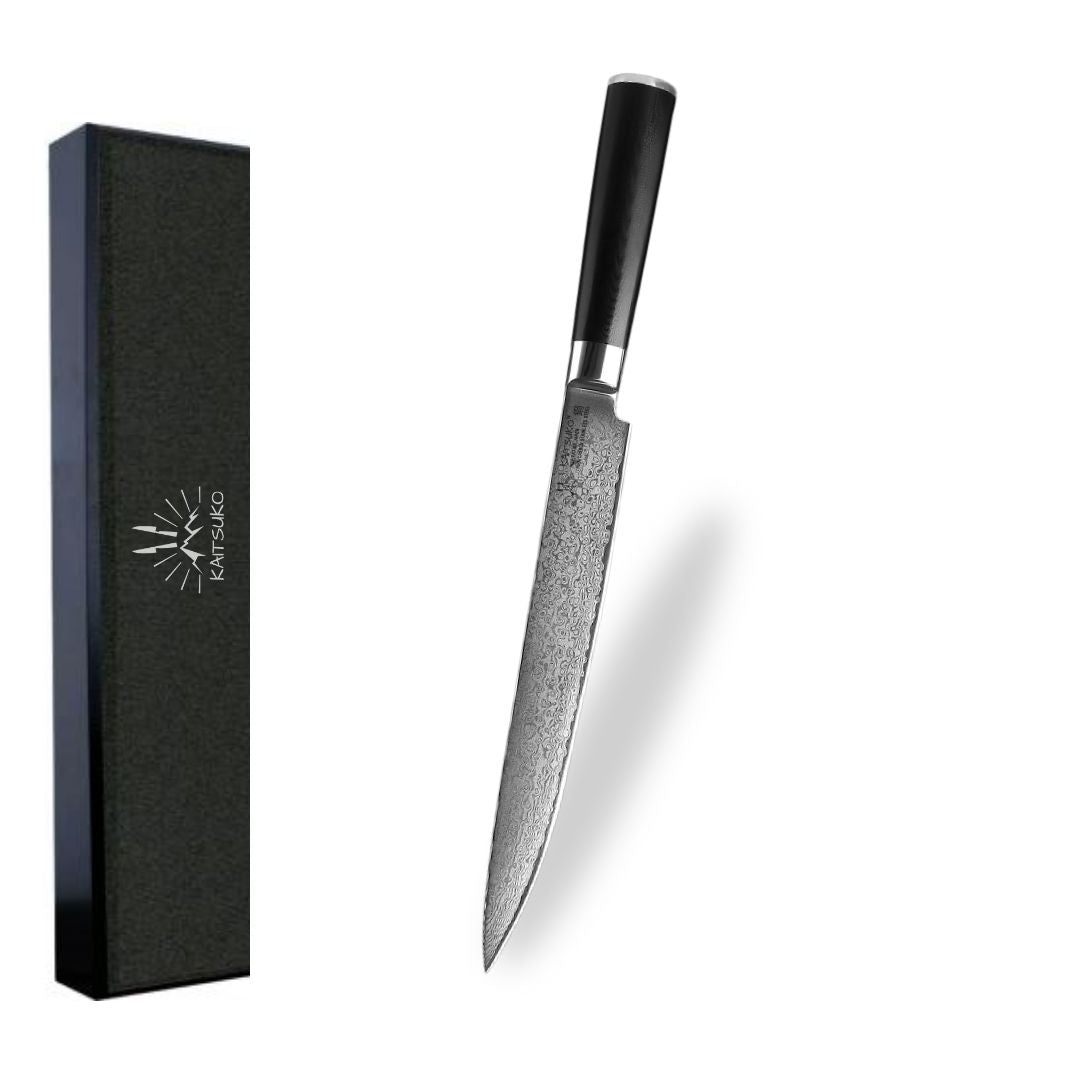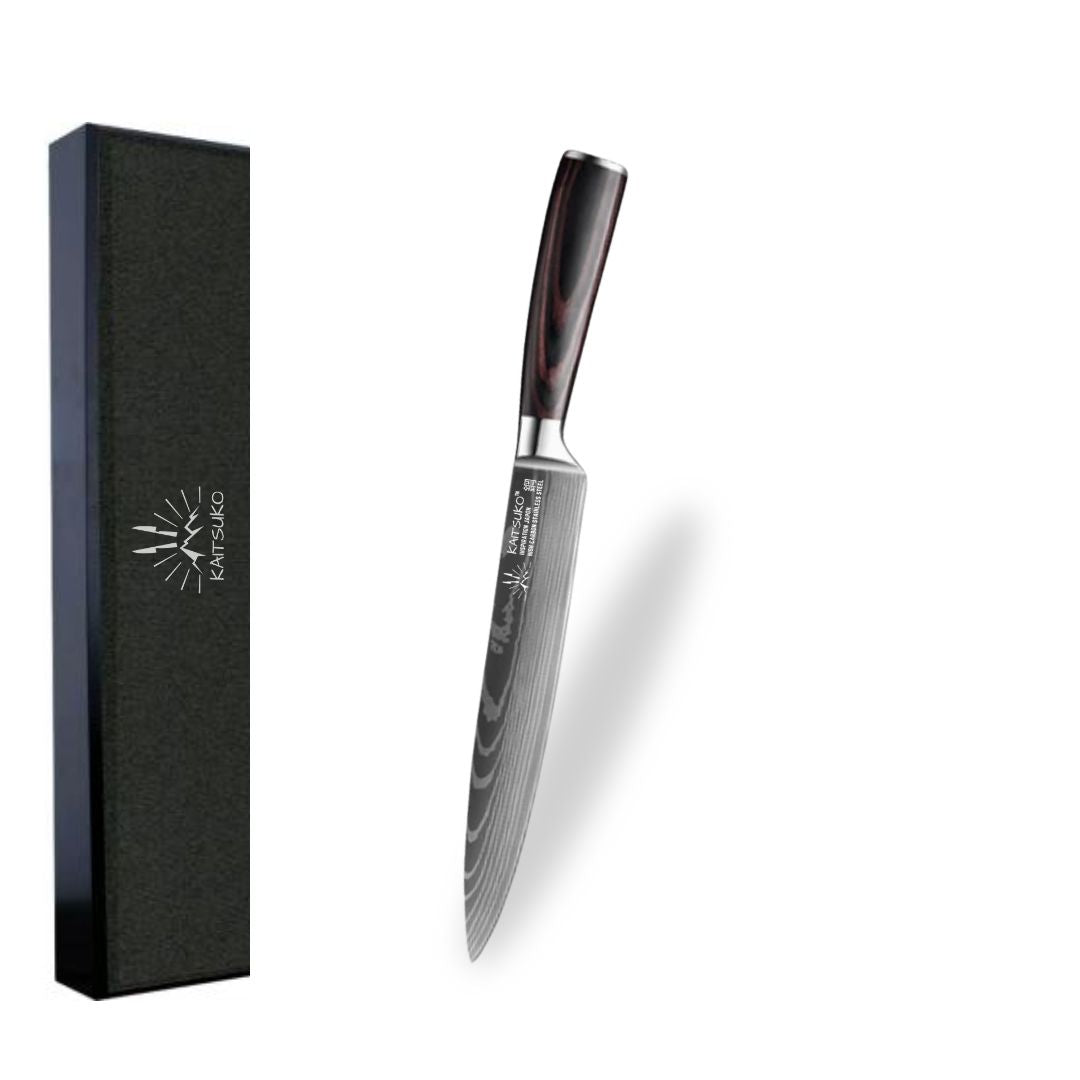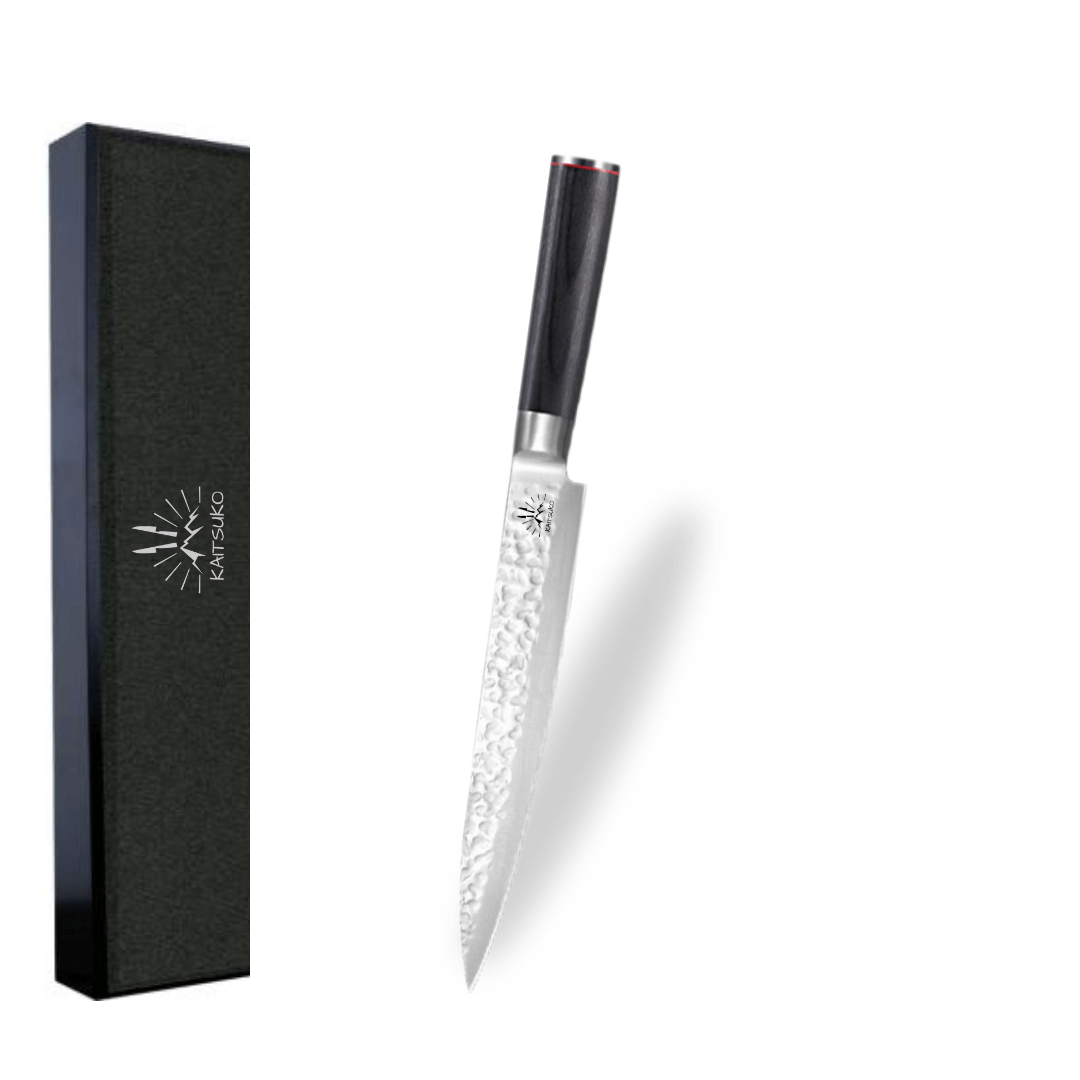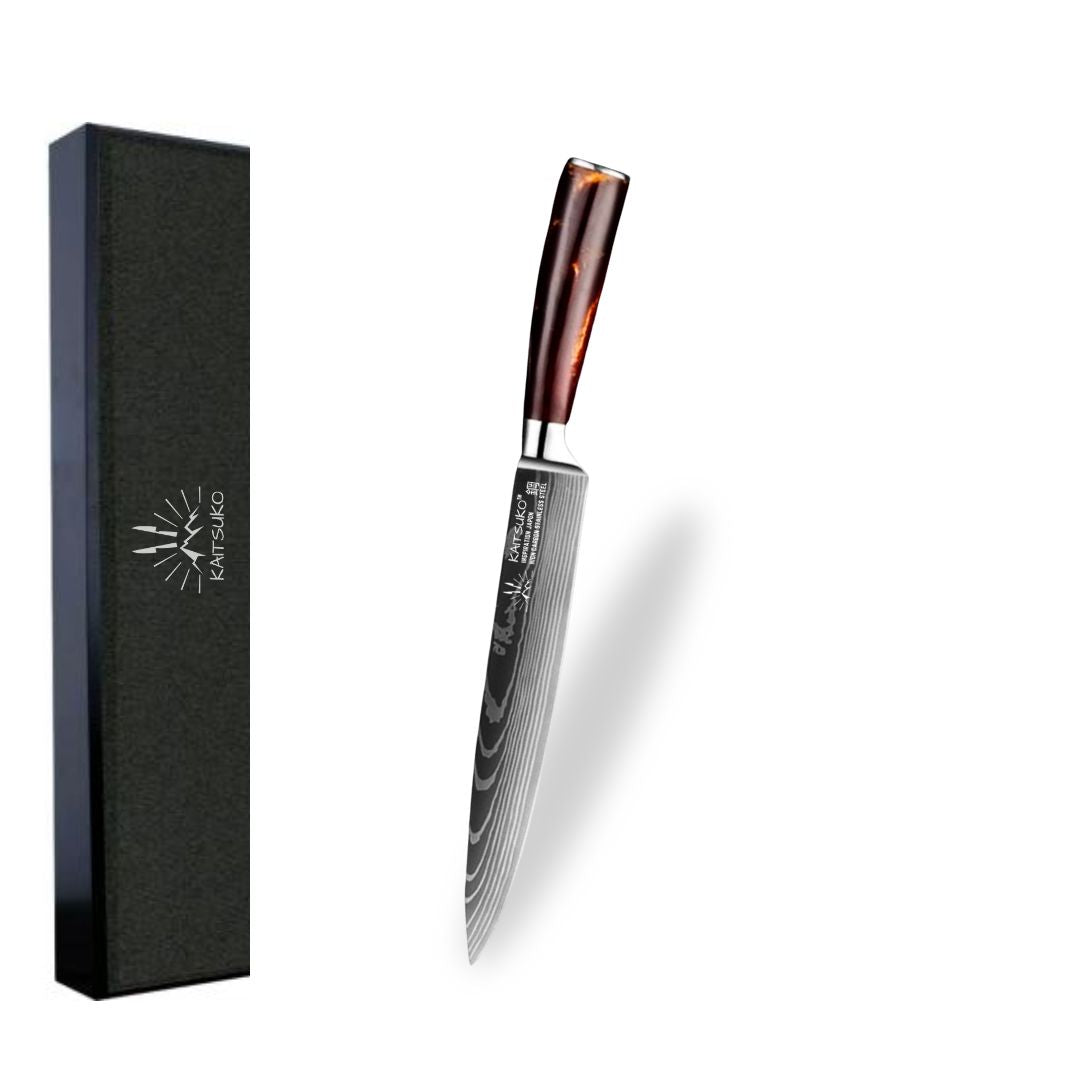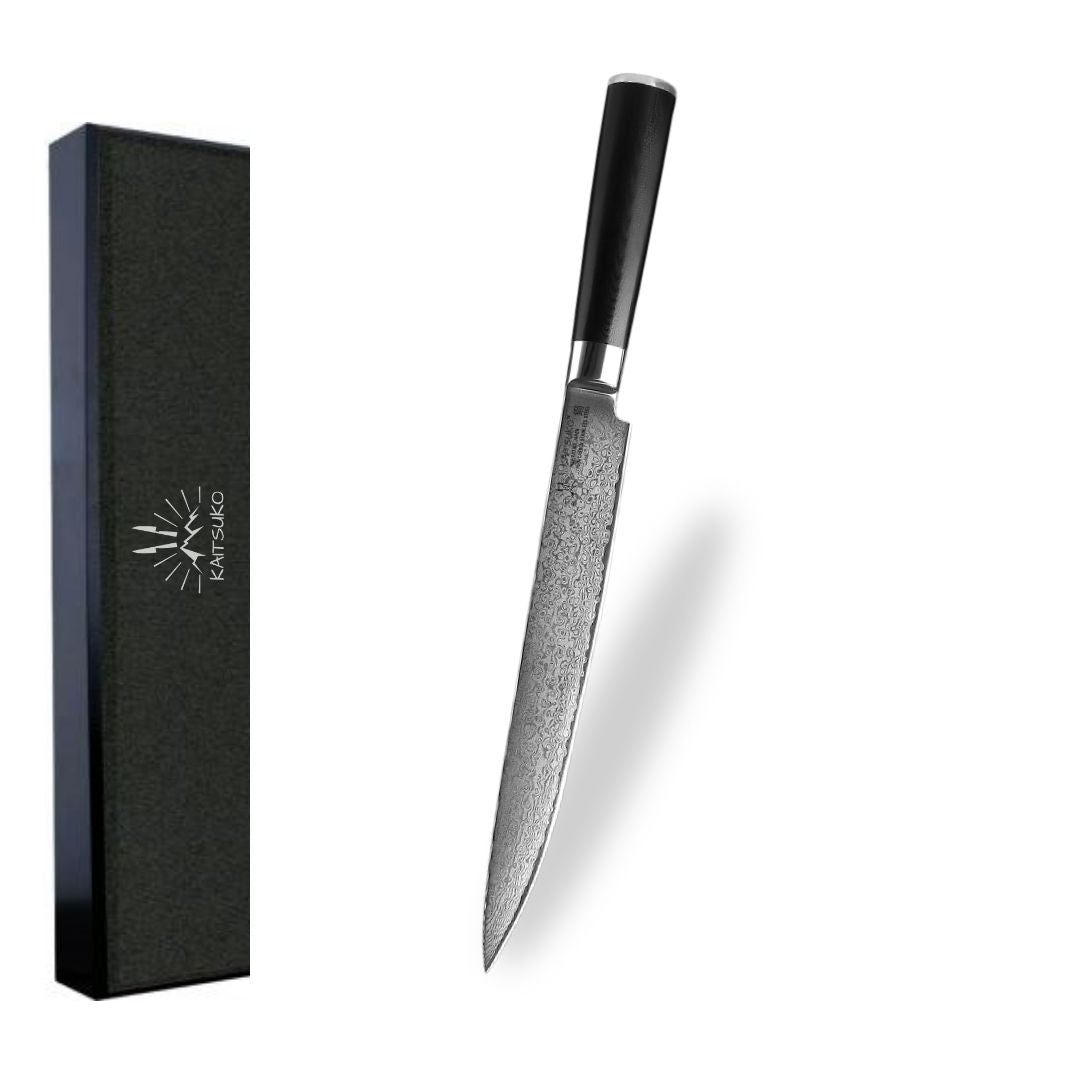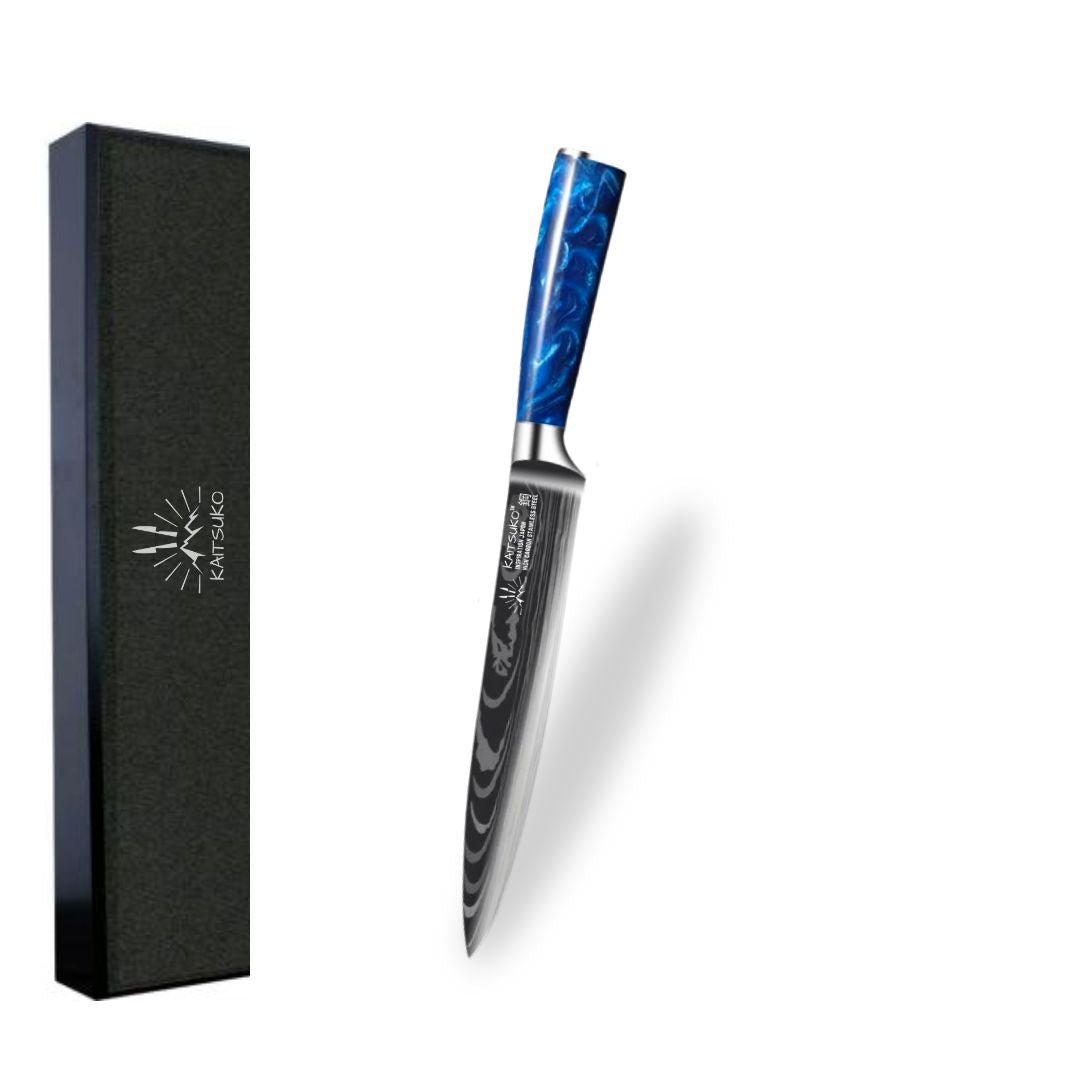Slicing knives are specifically designed to make clean and regular cuts , whether for meat, fish or vegetables. If you are looking to easily prepare carpaccios, roasts or salmon fillets, you have come to the right place.
At Kaitsuko, we believe in the importance of every detail in the kitchen . That's why we offer a meticulous selection of high-quality slicing knives, combining durability, comfort of use and elegant design.
Investing in a good slicing knife is, above all, about optimizing the presentation of your dishes, but also improving your efficiency in the kitchen. Discover our collection now and equip yourself with the best to enhance your culinary preparations!
What is a slicing knife?
Definition and usage
A slicing knife is nothing more than a kitchen utensil specially designed to make thin, clean and precise cuts . Equipped with a long, generally narrow and slightly flexible blade, this type of knife allows you to easily slice bulky foods such as meat, fish, cold cuts or even certain vegetables.
Its versatility makes it an essential tool for all gastronomy lovers, while being sufficiently specialized to meet the demands of professional chefs.
What is a slicing knife?
A slicing knife is designed to accomplish a specific task: the precise and uniform slicing of food.
Unlike a classic knife which can be used for cutting, chopping or mincing, the slicing knife is able to make fine and regular cuts, without damaging the texture of the food.
Now, this distinction between cutting and slicing is fundamental in cooking: cutting often refers to a more crude action, where exact size and shape matter less, while slicing requires finesse and uniformity, particularly for foods like meats, fish or delicate fruits and vegetables.
The importance of a slicing knife in meal preparation should therefore not be underestimated. Why? Because even slices not only improve the presentation of dishes , but also ensure even cooking , especially for meats.
Ultimate benefit: By preserving the integrity of food fibers, the slicing knife helps maximize flavors and achieve optimal texture in every bite.
DISCOVER OUR KYOTO COLLECTION IN DAMASCUS STEEL!
Types of Slicing Knives
Slicing kitchen knives
Slicing kitchen knives come in several varieties. Here are some examples:
Smooth-bladed slicing knife : It is ideal for precisely slicing roasts and fish fillets;
Slotted Blade Knife : This model prevents food from sticking, making it significantly easier to cut fatty meats or cheeses;
Japanese slicing knives : These often feature Damascus steel blades , combining exceptional sharpness and aesthetics, while Western models focus on robustness and versatility.
Japanese kitchen knives slicers
Japanese slicing kitchen knives , and more specifically Sujihiki , embody elegance and precision in the culinary world.
The Sujihiki, literally "thread cutter" , is a Japanese slicing knife designed to make thin, clean cuts, ideal for sashimi, fish fillets, meats and even fruit. With a long, thin, double-beveled blade, this knife slices effortlessly through food, minimizing resistance and delivering a surgically precise cut.
The benefits of Japanese knives for slicing are of course numerous. The Sujihiki, for example, is often made of high-quality steel , which guarantees you a superior edge that stays sharper longer than Western blades. Its light weight and perfect balance allow for easy handling, reducing fatigue when slicing large quantities. The thin design of the blade also ensures uniform and clean slices, perfect for sophisticated culinary presentations.
At Kaitsuko, our goal is above all to help you find the best kitchen knife through our range of high-quality Japanese knives!
Specific Uses of Slicing Knives
Meat slicing knife
The meat slicing knife is a must-have for any meat lover, especially for obtaining thin, even slices.
Of course, techniques for slicing meat accurately rely on knife mastery and knowledge of muscle fiber alignment . For example, slicing perpendicular to the fibers produces tender, chewy cuts while preserving the juiciness of the meat.
Precision is just as important when it comes to cutting meat, whether it's a roast, a leg of lamb or poultry. A sharp, well-suited knife, such as a carving knife, allows you to make clean cuts without tearing the meat or compromising its texture.
Bottom line: In the kitchen, precise slicing is synonymous with professionalism , ensuring not only a neat visual appearance, but also an optimal taste experience in every bite.
Salmon knife and ham knife
The salmon knife and the ham knife are two other specialized tools, specially designed for precise cuts of these delicate foods.
Let’s start with the salmon knife . With its long, thin and flexible blade, it is very useful for making ultra-thin slices of smoked or fresh salmon, while preserving the delicate texture of the fish.
For its part, the ham knife usually has a slightly stiffer but equally long blade, making it perfect for slicing raw or cooked ham into thin strips. This knife thus allows you to follow the irregular contours of the ham with precision, offering thin and regular slices that maximize the taste and aesthetics of the product.
Where a classic slicing knife could damage the delicacy of salmon or the texture of ham, salmon and ham knives ensure perfect cutting , making all the difference in presentation and tasting.
How to choose a slicing knife?
Selection criteria
When purchasing a slicing knife, there are several criteria to consider to ensure the tool will meet your specific kitchen needs. Here are the main aspects to look for:
Blade quality : Opt for stainless steel blades, known for their corrosion resistance and durability, or Damascus steel, which offers exceptional sharpness and unique aesthetics;
Blade length : Choose a blade that suits your needs; a length of 20 to 30 cm is ideal for slicing large pieces such as roasts or fish;
Blade Flexibility : A flexible blade is perfect for delicate cuts like salmon, while a stiffer blade is better for even slices of meat;
Ergonomic handle : Also remember to check that the handle is comfortable to hold, providing a good grip to reduce fatigue during prolonged use;
Balance and Weight : A well-balanced knife makes it easier to control and precision when slicing. The weight should be evenly distributed between the blade and the handle;
Ease of maintenance : Choose a knife that is easy to clean and maintain, especially if you plan on using it frequently, knowing that some knives require regular sharpening to maintain their performance;
Specific use : Finally, consider the type of food you'll be slicing most often. For example, a salmon knife is ideal for fish, while a ham knife is perfect for cold cuts.
Recommended brands and models
When choosing a high-performance slicing knife, several brands stand out for the quality of their products.
Shun and Global knives are renowned for their Damascus steel blades, offering exceptional sharpness and refined aesthetics, well suited to professionals and cooking enthusiasts.
Other examples are the models from Victorinox and Wüsthof , which stand out for their excellent value for money, combining durability and efficiency at a more affordable cost. In terms of price, high-end knives may represent a greater investment, but their longevity and performance justify this difference.
For more modest budgets, brands like Kai offer reliable options without compromising on slicing quality.
Frequently Asked Questions About Slicing Knives
What is the difference between cutting and slicing?
Cutting is the process of dividing a food into pieces, often in a rough manner. Slicing, on the other hand, involves making thin, even cuts, ensuring neat presentation and even cooking.
How to use a slicing knife effectively?
To use a slicing knife effectively, keep a firm grip on the handle and slide the blade in one smooth motion, without applying too much pressure. Then, be sure to slice perpendicular to the grain of the meat to get thin, even slices, and you're done!









